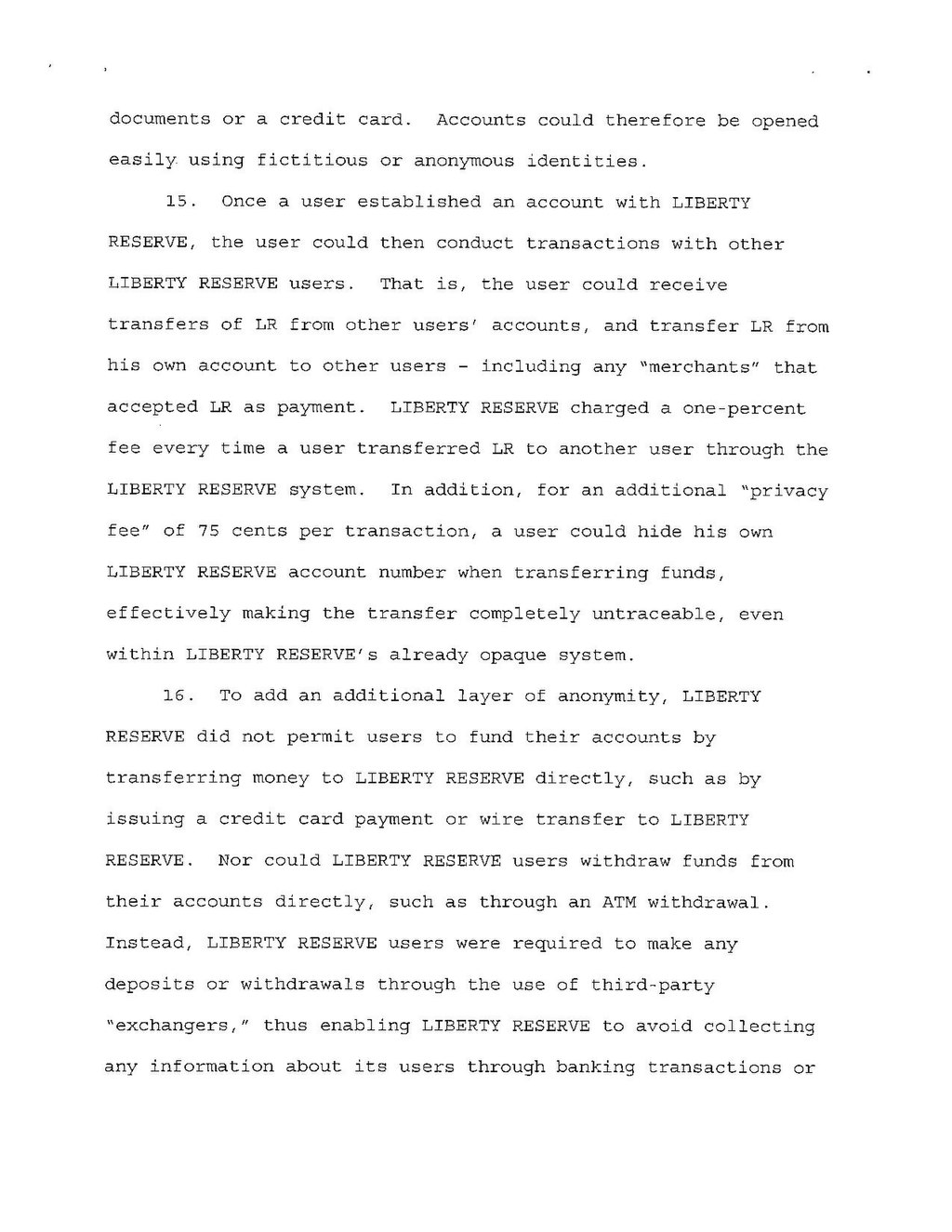documents or a credit card. Accounts could therefore be opened easily using fictitious or anonymous Identities.
15. Once a user established an account with LIBERTY RESERVE, the user could then conduct transactions with other LIBERTY RESERVE users. That is, the user could receive transfers of LR from other users’ accounts, and transfer LR from his own account to other users – including any "merchants" that accepted LR as payment. LIBERTY RESERVE charged a one-percent fee every time a user transferred LR to another user through the LIBERTY RESERVE system. In addition, for an additional "privacy fee" of 75 cents per transaction, a user Could hide his own LIBERTY RESERVE account number when transferring funds effectively making the transfer completely untraceable, even within LIBERTY RESERVE'S already opaque system.
16. To add an additional layer of anonymity, LIBERTY RESERVE did not permit users to fund their accounts by transferring money to LIBERTY RESERVE directly, such as by issuing a credit card payment or wire transfer to LIBERTY RESERVE. Nor could LIBERTY RESERVE users withdraw funds from their accounts directly, such as through an ATM withdrawal. Instead, LIBERTY RESERVE users were required to make any deposits or withdrawals through the use of third—party "exchangers," thus enabling LIBERTY RESERVE to avoid collecting any information about Its users through banking transactions or
